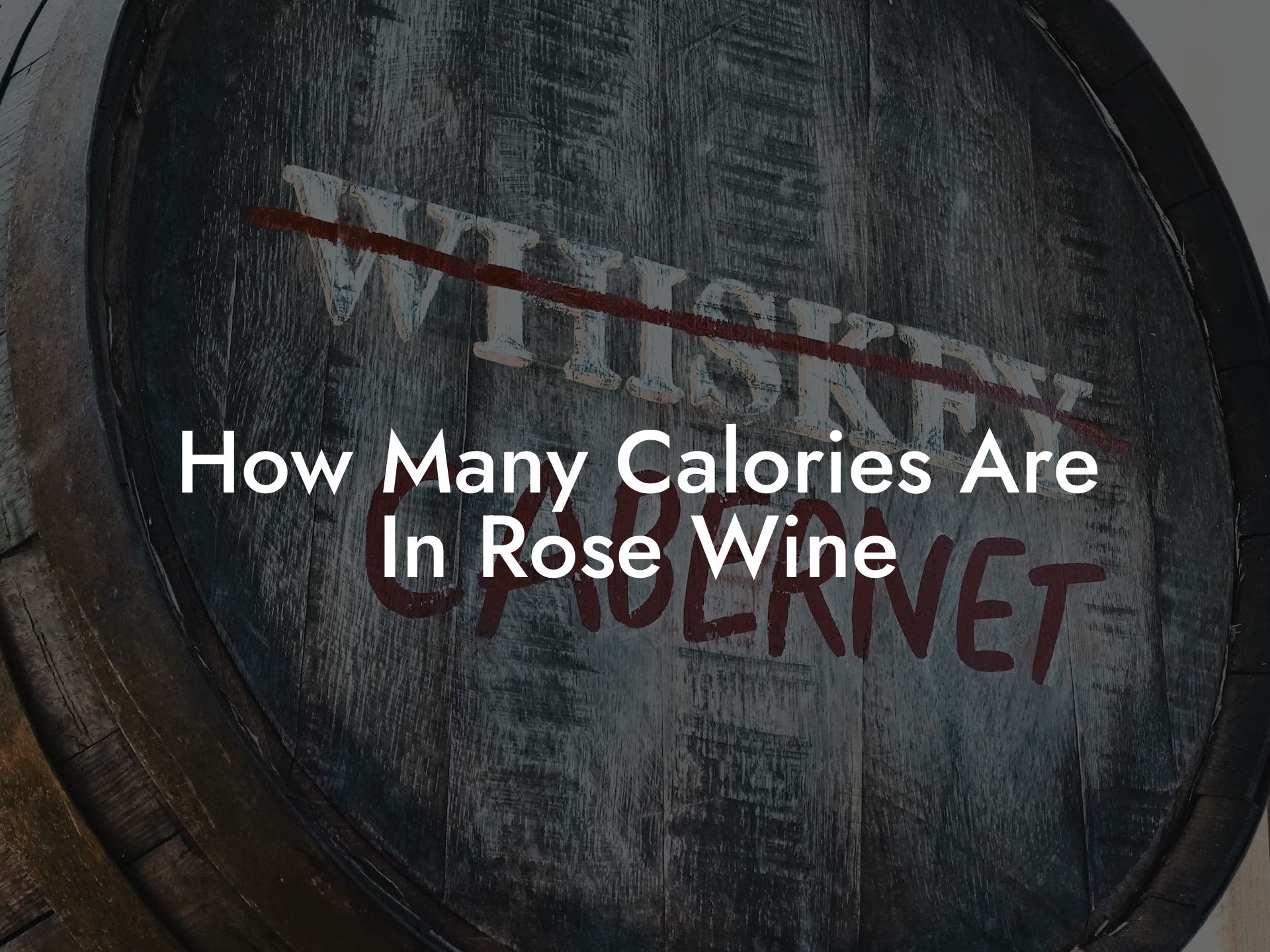Raise your glasses, wine enthusiasts! Today we're diving into the enchanting world of rosé wines – that pink-hued delight that has taken the wine world by storm. As we sip, swirl, and celebrate all things rosé, we can't help but wonder: how many calories are in our beloved blush beverage? Fear not, fellow winos, for we've got the answers! Grab a glass and join us as we uncork everything you need to know about rosé and its caloric count.
How Many Calories Are In Rose Wine Table of Contents
What makes rosé unique
Production methods
Before we jump into the calorie specifics, let's get to know rosé a bit better. Rosé is produced by allowing red grape skins to come in contact with the juice for a shorter period than it would during red wine production. There are three main methods of producing rosé:
- Direct pressing: Grapes are crushed and pressed, extracting juice with minimal skin contact.
- Maceration: Crushed grapes are left in contact with the juice for a few hours to a couple of days before separating the liquid.
- Saignée: A portion of the red wine juice is 'bled off' during production, and the remaining juice becomes a rosé.
Regional varieties
Rosé can be made from a myriad of grape varieties, resulting in a wide range of flavors and styles. Some of the most popular rosé-producing regions and their respective grape varieties include:
Do You Want to Win a Free Bottle of Wine?
Don't miss out on the opportunity to win a free bottle of wine every week.
Enter our weekly prize draw today!
- Provence, France: Grenache, Cinsault, Mourvèdre, and Syrah.
- Rioja, Spain: Tempranillo and Garnacha.
- Tuscany, Italy: Sangiovese and Pinot Noir.
Rosé and calories: The breakdown
When it comes to rosé, the calorie count can vary depending on factors like alcohol content, sugar level, and serving size. Here's a general guideline of what to expect when it comes to the calorie count in rosé:
- An average serving size of rosé is 5 oz (150 ml).
- Most rosé wines contain 12 to 14% alcohol by volume.
- Rosé wines tend to have less residual sugar compared to sweet wines like Moscato or Riesling.
- On average, a 5 oz serving of rosé can range between 80 to 120 calories, with most falling in the middle at approximately 100 calories.
Keep in mind that these are just rough estimates, and it's always best to check the label or consult the winery for accurate caloric information.
How Many Calories Are In Rose Wine Example:
Let's say we're sipping on a refreshing glass of Provencal rosé, which typically has a lower alcohol content (around 12.5%) and a hint of residual sugar. With a standard 5 oz pour, this would clock in at around 85 calories – not too shabby!
However, if we were to enjoy a Tavel rosé from the Rhône Valley, known for having higher alcohol content (around 14%) and fuller body, the calorie count might jump to around 110 calories per 5 oz serving.
Now that you're equipped with all the knowledge about rosé wine and its calorie count, you can sip with confidence and impress your friends at your next wine tasting! Feel free to share this article with fellow wine lovers and spread the pink-hued joy. Don't forget to explore more exciting wine-related content at Black Wine Club – after all, life's too short to not savor every sip!
Do You Want to Win a Free Bottle of Wine?
Don't miss out on the opportunity to win a free bottle of wine every week.
Enter our weekly prize draw today!












